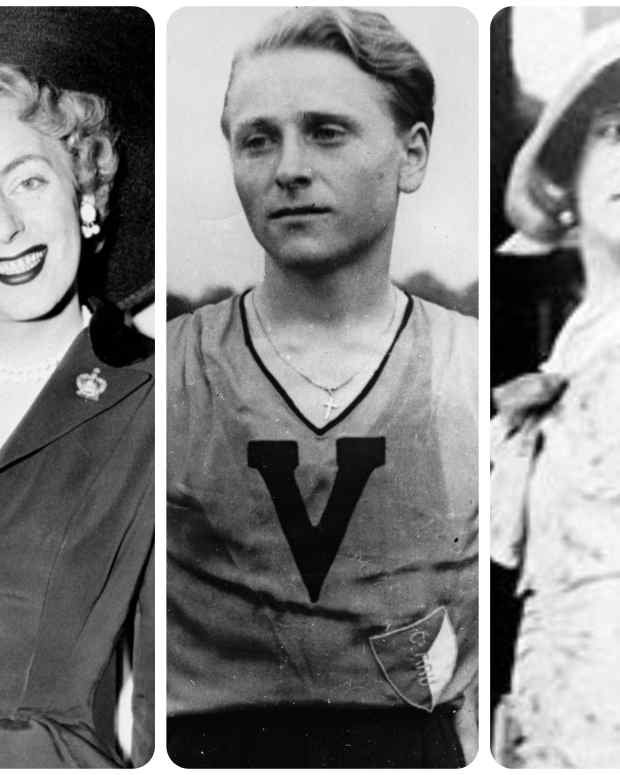Tam Lin, Bone-fire Night & Halloween
Bonfire Night
Then would I never tire, Janet,
In Elfish land to dwell,
But aye, at every seven years,
They pay the teind to hell;
And I am sae fat and fair of flesh,
I fear 'twill be mysell."
— From the Ballad of Tam Lin, traditional.
Have you noticed how bonfire night has spread itself out over the last few years?
When I was a child bonfire night was just that: one night when we would gather in the back garden by a bonfire to watch a few spluttering fireworks before we went to bed. Occasionally we might be taken to an organised bonfire party in some large park somewhere, and watch a spectacular firework display from a roped off space, an agonising distance from the source of heat, while zealous fire-fighters roamed about looking efficient, making sure everything was safe. That was never very much fun, being far too safe (and cold) for any real pleasure.
But otherwise this was how it was. Rushing home from school full of excitement and expectation. Baked potatoes. Toffee apples. A box of fireworks that my Dad would ignite with manly glee. Hot chocolate for the kids. Beer for the adults. Sparklers that could write your name in the darkness. A flaming Guy. Sparks that danced like brief angels in the night air. The stinging smell of smoke. Warm woolies, cold noses, and an inability to sleep afterwards as other people's bonfire parties stretched on into the night. And we would watch and listen out of our bedroom window as the screaming surge of rocket-trails became gothic arches supporting the sky.
These days it all goes on for weeks. We have become gluttons for our own busy entertainment. It starts several days before Halloween, and ends usually some days after November the 5th.
Of course, bonfire night is a specifically English 17th century State-sponsored festival commemorating the victory of the Protestant Parliament against the Catholic opposition. In fact it is the commemoration of a failed act of terrorism, in celebration of which we burn an effigy of a Catholic. It would be like, in the aftermath of 9-11, holding a bonfire party in which we burnt a figure in a turban, calling it “the Bin Laden”. Which would be funny, if it wasn't so plausible these days.
Parties
There are two major November the 5th parties in the UK: one in Lewes in East Sussex, celebrating the victory of parliament in which they have been known to burn an effigy of the Pope; the other, in Bridgewater in Somerset, marks a day known as “Black Friday”, on the nearest Friday to November the 5th. The story goes that the supporters of the plot had set up beacons across the country which were to be lit if the act was successful. Unfortunately for the people of Bridgewater, predominantly Catholic at the time, a nearby beacon was lit accidentally, so they went to bed on the Thursday believing that the plot was a success. It was on the Friday morning that they heard the bad news: hence the name “Black Friday”.
The Bridgewater party takes the form of a carnival, which processes though many of the West Country towns in the succeeding weeks.
The word "bonfire" may be a reference to "bone-fires", the burning of animal bones sacrificed to the gods in celebration of the turning seasons. Animal bones are full of fat and would sizzle and crack before they exploded. This would have been the prehistoric equivalent of a firework display, sending dangerous hot sparks high into the night air to mingle with the stars, and bone-shrapnel into the crowds.
Although in England we have moved the date to suit the anti-Catholic propaganda element, it is really an ancient festival recognising the coming of winter. Its historic date is October 31st, All-Hallows Eve, also known as Samhain. Traditionally it is the Celtic New Year, and was always celebrated with fire, with apples, and - possibly, in the dim and distant past – with some form of sacrificial offering. Hence the Guy.
It is the night that the dead roam.
In Scottish households an extra place would be laid at table to welcome the ancestors. And for all of you who think that Trick or Treat is an American invention: it is not. Its origins lie in the Celtic fringe. People would don disguises so that the visiting dead could mingle freely, and feel welcome in our midst. Who knows whose face it was behind the mask? Was it Uncle George just fooling around? Or Great Uncle Albert, long since deceased, longing to share the warmth of life with the living again?
You can see why. The time of year smells of death. It is ripe fruit and fermentation, rotting leaves and mushroom spores. The smell of sweet decay. The winter nights are drawing in, and there is the sense of melancholy in the air. The light is in decline, and the dark is on the rise. In the eternal battle between night and day, the night is winning.
Tam Lin
The old Scottish ballad Tam Lin is set on Halloween.
The poem opens with a warning. The maidens are warned not to go to a place called Carterhaugh because it is haunted by an elf called Tam Lin, or Tamlane. No maiden goes to Carterhaugh, but she will lose either her gold ring, her green mantle or her maidenhead.
Now gold rings ye may buy, maidens,
Green mantles ye may spin,
But, if ye lose your maidenhead,
Ye'll ne’er get that again."
But Janet refuses to take the advice and goes to Carterhaugh anyway, where she plucks a rose. Tam Lin appears, and asks by what right she takes what belongs to him? Because Carterhaugh is mine she says. It was given to me by my father.
Whereupon Tam Lin takes her by the hand and leads her to the bushes.
He's taken her by the milk-white hand,
Among the roses red,
And what they did I cannot say,
She ne’er return’d a maid."
Back in her father’s house she comes down with a sickness, and her father guesses that she is with child. She admits that she is, but tells him that no man in the castle can lay claim to her, because the child does not have a human father. It is an elfin child.
She goes back to Carterhaugh and she plucks two roses, at which point Tam Lin appears, warning her that if she plucks any more she will kill the child. Tam Lin then tells her that he was once a human, but had fallen from his horse at the age of nine and been captured by the Queen of the Fairies. But every seventh year, at Halloween, he says, the fairies pay a tithe to hell, and he is fearful that this year it will be his turn. He asks her to rescue him.
This night is Halloween, Janet,
The morn is Hallowday,
And if ye dare your true love win,
Ye have nae time to stay.
The night it is good Halloween,
When fairy folk will ride,
And they that would their true-love win,
To Miles Cross they must bide.
But how will she recognise him, she asks? She is to wait at Miles Cross till the fairy ride passes by. She must ignore the first company and wait for the next. Then she must ignore the black horse, and the brown horse, and wait for the white steed as it passes by. She must lay hold of the rider and bring him down and not let him go. A series of magical transformations will occur. He will become an adder and then an asp, and then a burning lump of coal - which she must dip in first in milk, and then in water - and then a toad and an eel and a dove and a swan. The transformations vary, depending on the version of the ballad you are reading. Sometimes he is turned into a bear, and sometimes a lion, and a variety of other creatures. Finally he will turn into a naked man, and she must cover him with her mantle, and hold to him fast.
She does all that he asks, until finally she is holding the father of her child, naked, in her arms.
The Queen of the Fairies is not best pleased, but she has to admit that Janet has won the right to her own true love.
Thus the girl wins her knight and rescues him from Hell, and her child is given a human father.
The cult of the dead
In this way life is saved from death, and the earthly from the unearthly. There is a sense of ritual here, and of a charm being cast. It is a ritual of transformation. She must hold fast to her love in all his changing aspects. He has had his humanity stolen from him and she must bring it back. He has been under a spell since he was nine years old. There is something deep in this story, about the return to humanity after an absence, about the faith and determination needed to descend into hell to find true love once more.
The story reminds us of Orpheus, who tries to win back his wife Eurydice from the underworld. It is one of a nest of ancient myths which share this theme, and is a remnant of that most ancient religion: the cult of the dead, the worship of the ancestors, a religion which still has a huge, if mainly underground, following throughout the world.
In Romania, on All Hallows Day, the community gather in the graveyard with candles to celebrate the dead. Prior to that the graves will have been prepared, with fresh flowers and a makeover. On the night there is a hushed atmosphere of reverence, as people quietly commune with the departed, long-gone into the other world. Voices are subdued, candle-flames flicker over faces deep in contemplation, and the atmosphere is electric with expectation, as the quiet ghosts enter the world of the living for a night, and share secret whispers of grief with their loved-ones.
The blazing fire has its roots in our most ancient form of science too, sympathetic magic: the theory that like creates like. The fire is lit in commemoration of the Sun, whose waning light at this time of year was felt grievously by our ancestors, and its fierce light was meant to give encouragement to its return. As if the Sun had a personality, and could be appealed to in this way.
Well we can scoff now at such simple notions, while we enjoy the festivals as mere passing entertainment. But it is worth remembering that our ancestors were just as intelligent as we are. And while they may not have understood completely the workings of our Universe (how many of us do either?) yet in many ways they had a greater understanding of our place within nature, and a greater respect for the planet on which we enact our petty dramas.
Maybe they have something to teach us yet. Who knows?
The Ballad of Tam Lin
- There are numerous versions of the ballad available on-line.
- There is a website entirely dedicated to all things to do with the ballad. You can find it here.
- The Fairport Convention version, above, remains true to the original, and is a fine rendition of the ballad. Highly recommended.
- Below is a version by Steeleye Span which is also very good.
More Halloween stories by CJ Stone
- Halloween or If I Were A Witchs Hat
It's that time of year again folks: the world-famous festival of fake blood and tackiness known as Halloween. From the Whitstable Times - Chapter 1 of La Vie D'Arthur
Samhain. Halloween. The season of darkness. Grim clouds scutter like thin grey rags under a sombre sky. This is the time of the ancestors, the time of the ancients, when spirits roam the land. The time of the dark awakening... - Shades of Other Lives: Photographs by Gerry Atkinson
And even after the children grow up and have children of their own, this picture will live on, with those playful shouts of joy still echoing in the other room on that Halloween night so long ago.
© 2011 Christopher James Stone
Comments
Christopher James Stone (author) from Whitstable, UK on October 31, 2011:
Drphn: I agree. It's mysterious and lovely, much more evocative and dreamy than the relentless heat of the summer.
Drphn from Planet Earth on October 30, 2011:
...The season itself...my favourite...If you'd ask me i'd rather live surrounded by fog...misterious embracing...dreamy fog. There's always a story isn't it? Thank you for sharing CJ...the spell of illusion. ;)
Christopher James Stone (author) from Whitstable, UK on October 29, 2011:
They've always been linked in my mind Fen, and of course the sophisticated modern Mr Freud linked the two by talking about Eros and Thanatos. But I've never been under the illusion that us moderns are any more sophisticated than our ancient predecessors. Less so in fact, depending on what period in history we're talking about. Mr Freuds was tipping a wink at Greek mythology in his reference, and, of course, the ancient Greeks leave us standing when it comes to sophistication and awareness in thought. No doubt you can think of other ancient societies that were equally advanced.
fen lander from Whitstable on October 29, 2011:
I'm very interested in your take on this CJ because you've managed to link love and death through this ancient festival/ritual. The French Petit-Mort comes to mind. Us clever moderns like to think such sophisticated ideas are our own... but as you've shown here, death and sex (love) were linked in ancient thought.
Steve Andrews from Lisbon, Portugal on October 29, 2011:
The seasonal calendar makes good sense to me, Chris, and I used to follow it in the UK but here I am not part of any druid or pagan groups so usually these festival days are just days apart from at midsummer which is very important here! Halloween here doesn't involve kids banging on the door for trick or treat... well, certainly not where I live!
Christopher James Stone (author) from Whitstable, UK on October 29, 2011:
Thanks Knowing Truth. There's more to Halloween than we imagine.
Knowing Truth from Malaysia on October 29, 2011:
Hi CJ, thanks for sharing. It really gives me more insights to Halloween celebration. Happy Halloween!
Christopher James Stone (author) from Whitstable, UK on October 28, 2011:
Language doesn't make sense to Tiggy either. The day is a sort of grammatical tool to mark of the meaning of the season, that's all. It's like a punctuation mark in the year. It reminds us something is happening. But the season is very real, and I think Tam Lin captures the feeling of it perfectly.
Steve Andrews from Lisbon, Portugal on October 28, 2011:
And it, like all the other 'special' days, means nothing to Tiggy! That's why I think animals make more sense! lol
Christopher James Stone (author) from Whitstable, UK on October 28, 2011:
Thanks Alek. It's a great poem isn't it? It has real atmosphere.
Cheers Steve: well you wouldn't feel it in Tenerife. It's a Northern thing. There's definitely an atmosphere. And I'm not talking about the day: that just marks the change. I mean the season itself. Hope the meeting with the Italian lady goes well.
Steve Andrews from Lisbon, Portugal on October 28, 2011:
Great hub, Chris, and voted up! For me it is always just another day and has been for many years but this year I am meeting a lady friend from Italy so it will be exciting!
AlexK2009 from Edinburgh, Scotland on October 28, 2011:
I liked it. I had forgotten about the Tale of Tam Lin.
Christopher James Stone (author) from Whitstable, UK on October 27, 2011:
Will do.
Maude Keating from Tennessee on October 27, 2011:
I did try to listen to the first song, but with my hearing, I could not understand it very well.
If you like Halloween poetry, stop by my place and take a look.
Christopher James Stone (author) from Whitstable, UK on October 27, 2011:
Thanks My Mind's Eye. I liked it too. Did you listen to the songs?
Maude Keating from Tennessee on October 27, 2011:
A captivating story to say the least, but a nicer version of Halloween than a lot of others.
Voted up.



















